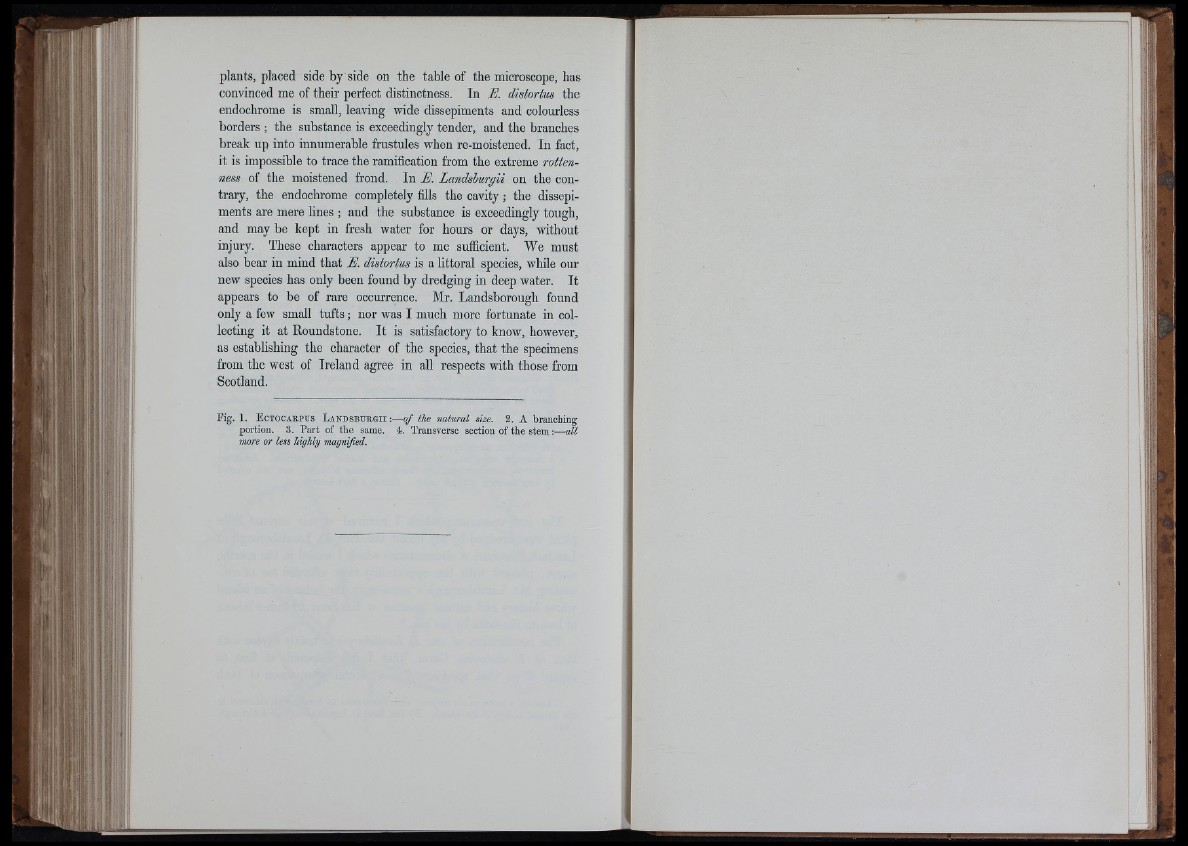
ri"
■I .1
.Sili ■’!
i i
ftfl
1 “'I
, ■ j r i i ; > . D ' .
ft. (LaftJtft
Lift
“S i l f i
plants, placed side by side on the table of the microscope, has
convinced me of their perfect distinctness. In B. distortus the
endochrome is small, leaving wide dissepiments and colourless
borders ; the substance is exceedingly tender, and the branches
break up into innumerable frustules when re-moistened. In fact,
it is impossible to trace the ramification from the extreme rottenness
of the moistened frond. In B. Landshurgii on the contrary,
the endochrome completely fills the cavity ; the dissepiments
are mere lines ; and the substance is exceedingly tough,
and may be kept in fresh water for hours or days, without
injury. These characters appear to me sufficient. We must
also bear in mind that B. distortus is a littoral species, while our
new species has only been found by dredging in deep water. It
appears to be of rare occurrence. Mr. Landsborough found
only a few small tufts ; nor was I much more fortunate in collecting
it at Roundstone. It is satisfactory to know, however,
as establishing the character of the species, that the specimens
from the west of Ireland agree in all respects with those from
Scotland.
Fig. 1. E c to c a e pu s L a n d s b u e g i i :— o f the natural size. 2. A branching
portion. 3. Part of the same. 4. Transverse section of the stem:— alt
more or It
m
I
ii .m
lifoj
I »
■